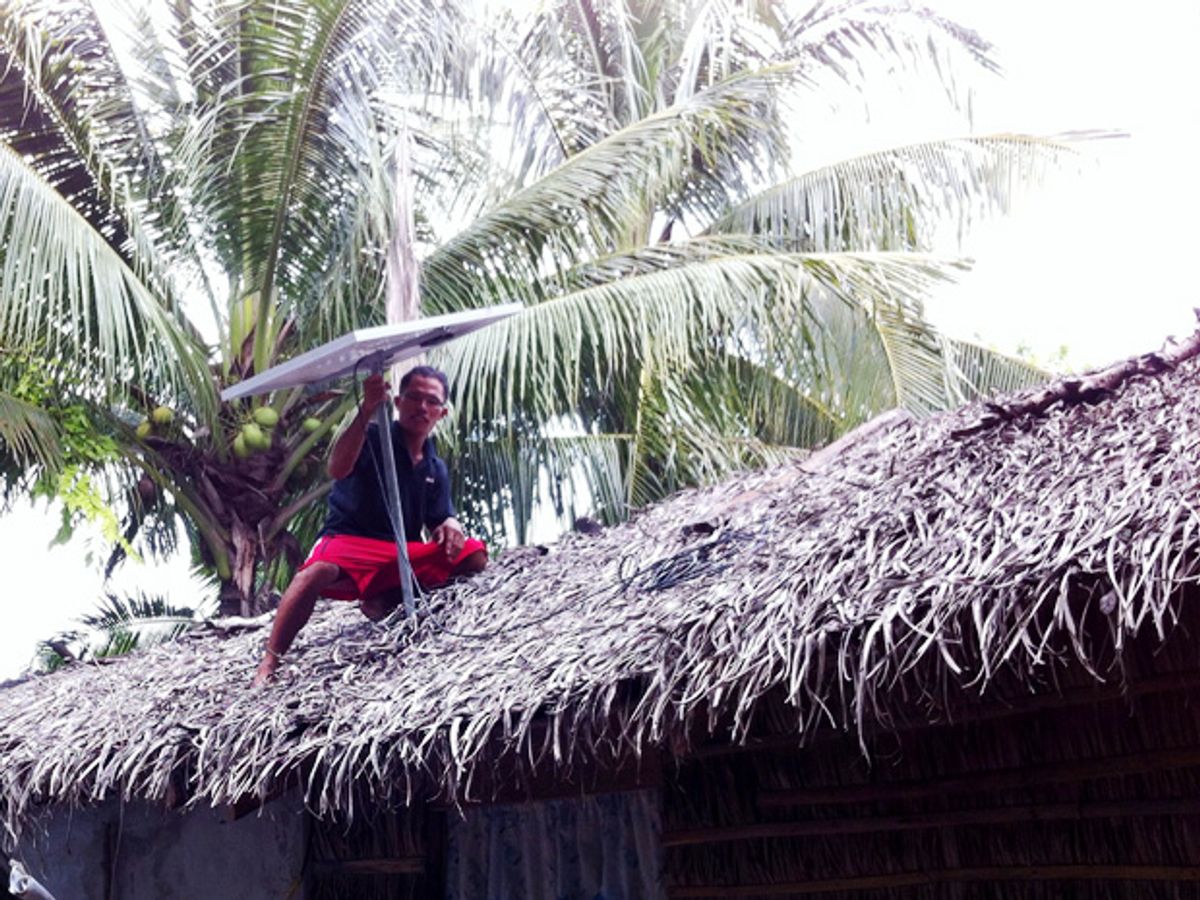When Filipinos on the island of Alibijaban need to charge the car batteries they rely on for electricity, they take an eight-minute boat ride to the mainland to recharge the batteries at a local shop.
Alex Hornstein, an MIT-trained engineer, is looking to cut out the boat ride and a lot of the cost. Hornstein is piloting cellular-connected microsolar in Alibijaban, according to a report in Fast Company.
The project, Tiny Pipes, has installed 60-watt solar panels on the roof of about 20 homes in Alibijaban in conjunction with the local utility, Quezelco. The panels come with a connection to a cellular network that controls the power flow from the panel.
For houses with a panel, Tiny Pipes will own the panel and customers rent the panels and pay for the power they use through a cellphone payment. If customers don’t want unlimited charge for the battery, they can set up a prepaid plan for a set amount of energy daily or weekly.
In the United States, the falling price of solar panels and innovative financing methods, primarily solar leasing, have led to a solar boom. There are both similarities and differences in some of the projects being piloted in the developing world, which also rely on some innovative financing schemes and lower hardware costs.
Generally speaking, remote villages pay a far higher percentage of their income towards power than developed or grid-connected regions. Fast Company reported that the residents of Alibijaban consume about one penny per day of electricity, yet they pay about US $1.50 to $2 per week to charge batteries.
In many poor regions, homes also rely on dirty kerosene lamps to provide light at night. Peru has a pilot to move 126 communities onto solar panels, with a goal of moving 500 000 rural households onto solar power. Other projects, such as SunBlazer, provide solar charging stations on wheels that are operating in some remote villages in Haiti.
Another group, SharedSolar, wants to go one step further and provide solar-powered microgrids that are connected to mobile payments so communities can not only have lights in homes but also power small businesses, such as selling ice. Some solar projects are looking to power other basic services, like clean water in India.
Hornstein and his co-founder Shawn Frayne first wanted to make microsolar a reality in remote areas by lowering the cost and extending the lifespan of the hardware. They developed a small machine, Solar Pocket Factory, which makes microsolar photovoltaic panels that can power small electronics. They claim their panels have a 10-year lifespan, five times the life of traditional microsolar.
In their Kickstarter campaign, they also claim their panels can be produced locally for a lower cost than traditional microsolar because it is automated instead of made by hand. As they developed the Solar Pocket Factory, however, they realized that the circuitry they developed to connect the panel to mobile networks was ultimately a more significant breakthrough. Currently, there is not a panel maker that offers a wirelessly controlled panel from the factory.
Hornstein told Fast Company the panels have already withstood two typhoons and expects to expand to another 200 homes on Alibijaban and 1000 homes in another province next year.
“I want to be able to deploy Tiny Pipes at a scale that makes a dent,” said Hornstein in the article. “I'll start feeling like we're reaching that scale when we've hit a million installed panels.”
Photo: Alex Hornstein



